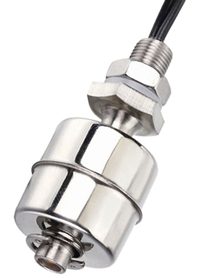How to Choose a Float Switch?
The float level switch is simple in structure, easy to use, stable in performance, long in service life, and easy to install and maintain. It is almost suitable for liquid level measurement and control in various industrial automation process control, and is widely used in petroleum, food, chemical, water treatment, liquid level measurement, control and monitoring in the fields of pharmacy, electric power, papermaking, metallurgy, ships and steel furnaces.
Based on the Archimedes buoyancy principle and the static magnetic field principle, the float level switch is mainly composed of a shell, a sensor circuit, a converter circuit and a display meter. It can be used for high temperature and high pressure, viscous, dirty media, continuous measurement of the liquid level/interface of oil products such as asphalt, wax, and flammable, explosive, and corrosive media. However, for complex working conditions, there are also standards and requirements for the purchase of float level switches.
When purchasing a float level switch, the following requirements should be followed:
- Meet the requirements of the working conditions, such as working pressure, working temperature, open or closed container, medium, etc.
- Meet the requirements of the job, such as measurement accuracy, measurement range, etc.
- Meet economic requirements. Choose the best value for money.
How to select a right float switch?
-
Determination of range. When the floating ball moves on the connecting rod, it is limited, and the rod length is longer than the required range. It is very important to determine the range, so as to avoid the situation that cannot be installed and measured accurately in the later stage.
- Determine the corrosiveness of the measured medium. If the corrosiveness is average, 304 and 316L materials can be purchased; if the corrosiveness is stronger and exceeds the corrosion resistance of 316L, the float level switch with strong corrosion resistance can be purchased, and the spraying PTFE process can be used.
- Consider the density of the measured medium to confirm whether there is any magnetic substance in it. If it contains magnetic substances, it will lead to inaccurate measurement results, or even impossible to measure the liquid level. When purchasing a float level switch, be sure to determine the working conditions in advance to avoid magnetic substances affecting the measurement results.
- Ensure whether the measured medium has impurities. If there are impurities in the measured medium, when the floating ball moves up and down the connecting rod, it is easy to be stuck, which affects the normal measurement of the liquid level. Therefore, if there are many impurities, it is not recommended to use a float level switch.

